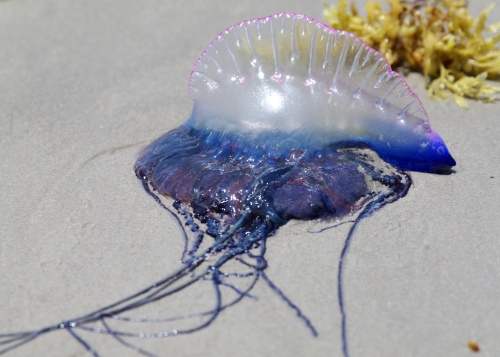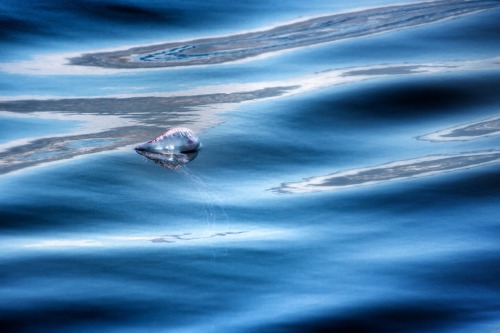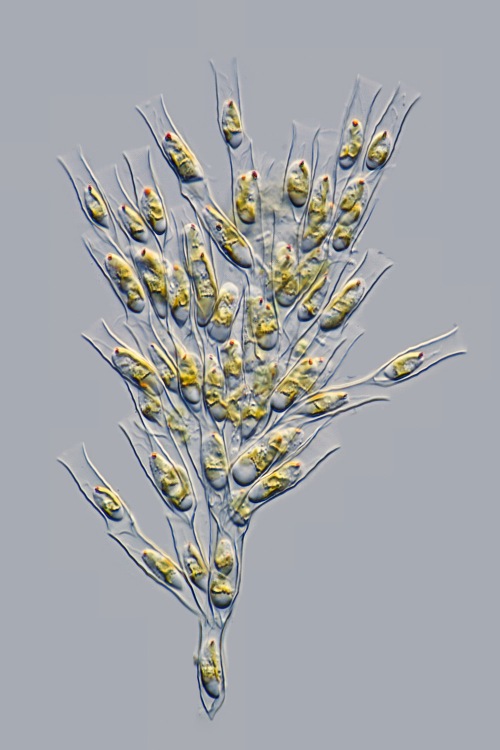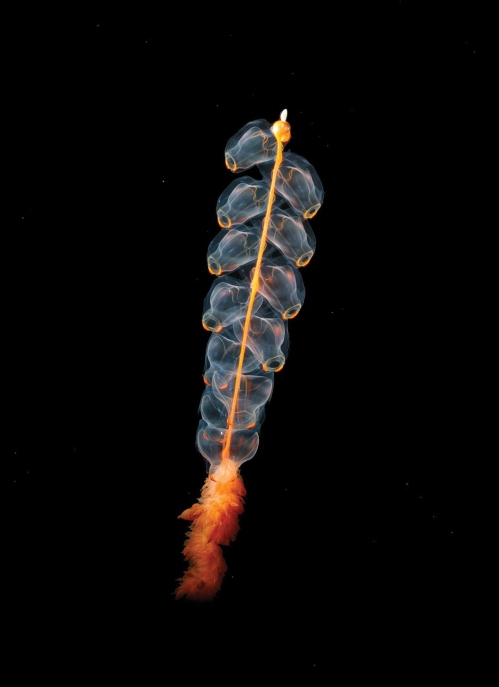by Piter Kehoma Boll
And so we finally reached the 100th Friday Fellow! In order to commemorate, we will have two Friday Fellows today, just as we had during the 50th one. And to start I chose a cnidarian that always caught me attention.
Living in the Atlantic Ocean and known popularly as Portuguese man o’ war, its binomial name is Physalia physalis, both words derived from the Greek word for bubble, physalis. And the Portuguese man o’ war is, in fact, like a floating bubble with some stuff attached, or at least it looks like that.

A Portuguese man o’ war lying on the beach. Photo by Anna Hesser.*
Most people may think that the Portuguese man o’ war is a jellyfish due to its looks, but it is actually part of another group of cnidarians, the siphonophores. Their body is not a single individual, but rather a colony of several smaller animals, called zooids, which are speciallized to have different functions within the colony and cannot live separately. They are all derived from the same embryo, thus being clones from each other.
The upper portion of the Portuguese man o’ war has a gas-filled sack, which is called the pneumatophore and is the original organism derived directly from the embryo. Below the pneumatophore there are several different kinds of organisms, such as nectophores for swimming, dactylozooids for defense and capture of prey, gonozooid for reproduction and gastrozooids for feeding. The long tentacles, which reach more than 10 m in length, are composed by dactylozooids and fish for prey throughout the water.

Floating on the sea. Photo by Regine Stiller.*
As other cnidarians, the Portuguese man o’ war has nettle-like cells which sting and inject venom. In humans, the venom usually cause pain and let whip-like marks on the skin where the tentacles touched. Sometimes more severe complications will results and in rare cases it may result in death.
– – –
References:
Stein, M. R.; Marraccini, J. V.; Rothschild, N. E.; Burnett, J. W. (1989) Fatal portuguese man-o’-war (Physalia physalis) envenomation. Annals of Emergency Medicine 18(3): 312–315.
Wikipedia. Portuguese man o’ war. Available at <https://en.wikipedia.org/wiki/Portuguese_man_o%27_war>. Access on June 16, 2017.
– – –
*
This work is licensed under a Creative Commons Attribution-NonCommerical-NoDerivs 2.0 Generic License.



